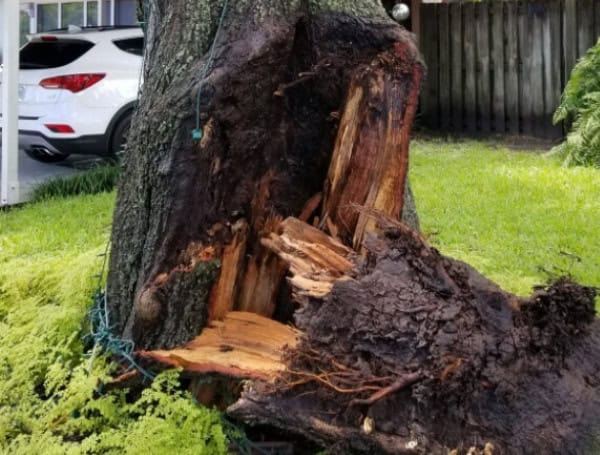Scientists confirm that two of the world’s most destructive invasive termite species are not only spreading in the United States but also hybridizing – the process of two different species crossbreeding to produce a hybrid.
This raises concerns about their potential to spread farther and cause even greater structural and environmental damage.
A new study from the University of Florida Institute of Food and Agricultural Sciences (UF/IFAS) confirms that hybrid termite colonies have now been established in South Florida. Just published in the journal Proceedings of the Royal Society B, the study documents how the invasive Formosan subterranean termites and Asian subterranean termites are not only coexisting in urban environments but also breed with each other.
READ: University Of Florida Study: Boats Play A Key Role In Global Termite Spread
“About 10 years ago, we first observed males and females from the two species interact through interspecies courtship behaviors during spring termite dispersal flights,” said Thomas Chouvenc, associate professor of urban entomology at the UF/IFAS Fort Lauderdale Research and Education Center and lead author of the study. “This was unexpected, and it raised red flags about the possibility of hybrid populations forming in the field.”
Both termite species form massive colonies that, once mature, can send out winged termites to find a mate and establish nests as new queen and king. Over the past decade, UF/IFAS scientists monitored termite activity across neighborhoods where the two species overlap. While initial lab studies showed that hybrid colonies could form, it was unclear whether they could thrive or produce fertile offspring.
“Unfortunately, termite colonies are very cryptic and trying to find hybrid colonies in the field is like looking for a needle in a haystack,” said Chouvenc. “We monitored termite activity closely for more than a decade to check for the establishment of hybrid colonies in some of the neighborhoods affected by the two termite species.”
READ: Florida Under Siege: Invasive Termite Species Threaten Homes And Trees, UF Researchers Warn
“All initial observations raised doubt that hybrid colonies could thrive and produce fertile offspring, as quarantined lab colonies first appeared to be sterile mules,” Chouvenc added.
Then in 2021, Chouvenc and his team began collecting winged termites in Fort Lauderdale that didn’t match the shape or form of either species. That’s when they ramped up field monitoring.
“At first, I could not believe it, as I was hoping to never find it,” he said. “Since then, we have confirmed the presence of hybrid swarms every year since 2021, including in April 2025.”
Genetic testing confirmed these samples were hybrid termites, with individuals having half their genes from the two species. For the past four years, researchers collected winged hybrid termites during swarming events but were unable to determine the precise location of the colonies where the different winged hybrid termites came from. That changed in October 2024, during a routine survey of a city park in Fort Lauderdale, where the team discovered a tree infested with a colony that displayed hybrid-soldier traits they had previously studied in the lab.
“Thanks to the decade of lab work, we knew what the hybrid termite soldier looked like, and we were able to identify it immediately when we discovered it in the field,” said Chouvenc. “Because of their cryptic biology, it was most likely established there for more than five years before we could even detect it, and there are most likely many hundreds more out there that have already established, throughout urban south Florida.”
READ: Fallen Trees Reveal Hiden Termites: UF/IFAS Expert Offers Identification, Prevention Resources
With the presence of established hybrid colonies now confirmed, scientists warn that the consequences could extend far beyond Florida. Fort Lauderdale, dubbed the “yacht capital of the world,” is a known hotspot for the introduction and spread of invasive termites via recreational boats. Chouvenc’s previous research has shown that private vessels are a major pathway for spreading these species internationally.
“This may be a Florida story now, but it likely won’t stay just in Florida. Give it time,” he warned.
This latest study also highlights how this phenomenon is not unique to the United States. In collaboration with researchers in Taiwan, where both termite species are long established, similar hybridization events have recently been confirmed, suggesting that crossbreeding may be inevitable wherever the two species coexist.
“Having the two of the most destructive termite species in the world hybridizing here in Florida is a real concern and it is unknown if in the long term it will be a major economic problem that would be compounded to the one already caused by both species,” he said. “As the hybridization process has likely been ongoing for a decade, it is not possible to stop it. However, understanding the biology of this hybrid termite, its strengths and weaknesses, could help us further improve termite pest management solutions down the road.
Please make a small donation to the Tampa Free Press to help sustain independent journalism. Your contribution enables us to continue delivering high-quality, local, and national news coverage.
Connect with us: Follow the Tampa Free Press on Facebook and Twitter for breaking news and updates.
Sign up: Subscribe to our free newsletter for a curated selection of top stories delivered straight to your inbox.

